Cylindrobasidium evolvens (Fr.) Jülich
Introduction
This widespread crust is actually closely related to gilled mushrooms, a prime example of the rapid transitions in fungal morphology that occur through evolution. Cylindrobasidium evolvens sometimes takes on a pendulate or "cucullate" (hooded) form, particularly in the winter, which was originally described as the rare Cladoderris minima Berk. & Broome in 1878 before being recognized as Cylindrobasidium evolvens by Reid in 1959 (Mattock 2014).
For a time, researchers were excited about the prospect of using Cylindrobasidium evolvens as a biocontrol agent of Acer macrophyllum (bigleaf maple), which is treated as a weed in Pacific Northwest conifer plantations. During a backpacking trip through the Quinault Valley of Olympic National Park, old-growth bigleaf maple trees stunned me in a deeply aesthetic and spiritual way with their massive leaves, vast stretching branches, and mossy canopies. It is hard to fathom them being chopped down and sprayed like a weed. Although Cylindrobasidium evolvens is closely related to the destructive plant pathogenic genus Armillaria, it failed to check the growth of bigleaf maple trees, which suggests it's truly just a saprotroph (Lohbrunner 2001, Purewal 2004).
Cylindrobasidium laeve is a synonym.
Description
Ecology: Common and widespread saprotroph on hardwood branches and trunks.
Basidiocarp: Soft and membranaceous basidiome; orbicular, resupinate, or effused-reflexed with a small pileus, commonly growing on vertical substrates; top of caps tomentose and white; hymenium smooth to tuberculate, cream colored, cracking when dry or in age.
Chemical reactions: NA
Spore print: Whitish/pale cream.
Hyphal system: Monomitic, thin-walled, all septa with clamp connections; subicular hyphae width (3.6) 3.6–4.8 (5.4) µm, x̄ = 4.2 µm; oily inclusions common in subicular hyphae; 10 hyphae measured in KOH stained with phloxine.
Basidia: Terminal, narrowly clavate to cylindrical with four sterigmata and a basal clamp, often arising from small, squiggly hyphae; reported as 40–50 ✕ 5–6 µm.
Basidiospores: Ellipsoid in dimension, lacrymoid in form; hyaline, inamyloid, without guttules; length (7.3) 7.8–9.2 (10.4) µm, width (5.4) 5.8–6.9 (7.9) µm, x̄ = 8.5 ✕ 6.4 µm; Q (1.2) 1.3–1.4 (1.6), x̄ = 1.3; 30 basidiospores measured in tap water.
Sterile structures: Leptocystidia present, but not so distinct from probasidia; reported as 50–80 v 5–8 µm, fusiform, thin-walled, not encrusted, enclosed or slightly projecting beyond hymenium.
Sequences: NA
Notes: Unstaining, "dead" hyphae (maybe spent basidia) were crowded together in the hymenium making features difficult to observe without first thoroughly squashing the tissue.
Specimens Analyzed
ACD0242, MO409813; 27 March 2020; Ott Biological Preserve, Calhoun Co., MI, USA, 43.3142 -85.1218; leg. Alden Dirks, det. Garrett Taylor, conf. Alden Dirks, ref. Bernicchia & Gorjón (2010); University of Michigan Fungarium MICH 352229.
References
Bernicchia, A. & Gorjón, S.P. (2010). Fungi Europaei, Volume 12: Corticiaceae s.l. Massimo Candusso, Italia.
Lohbrunner, G. K. (2001). Biological control of Acer macrophyllum: Overview of host biology and the screening of fungal isolates with potential to control host growth. Simon Fraser University.
Mattock, G. (2014). Growth forms of Cylindrobasidium laeve. Field Mycology, 15(2), 42–44.
Purewal, D. (2004). Testing native isolates of Cylindrobasidium laeve for suppression of regrowth of Acer macrophyllum. Simon Fraser University.
Links
Wikipedia (as Cylindrobasidium laeve)
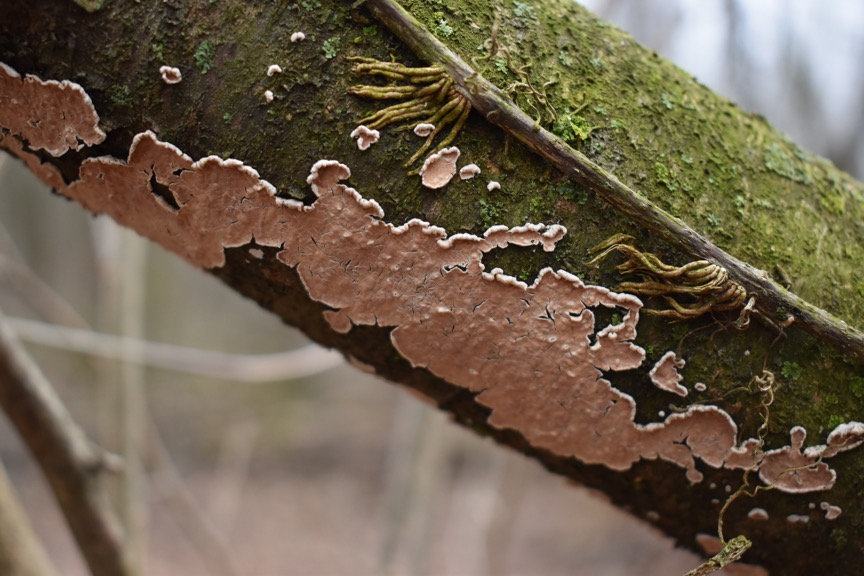
Smooth to tuberculate hymenium.
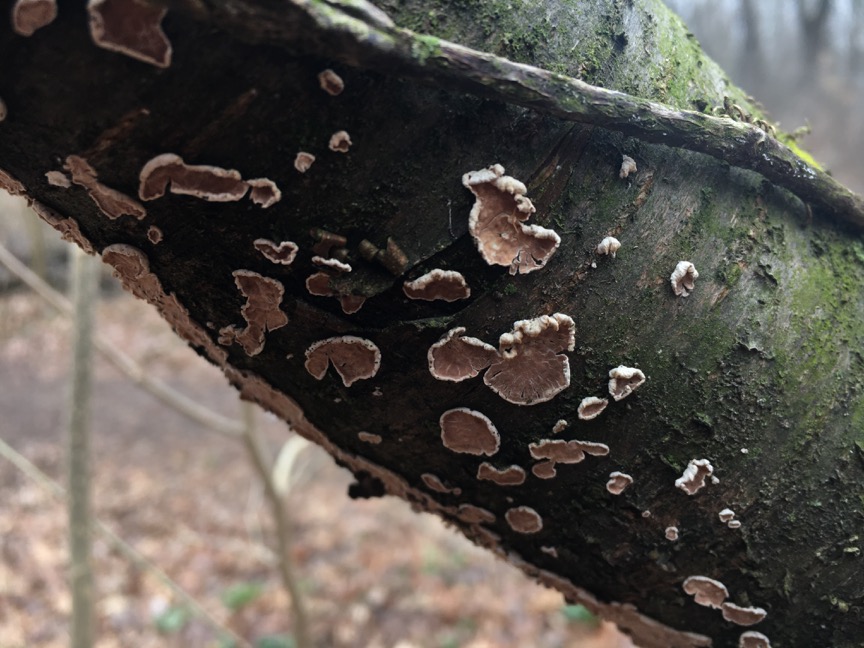
Fruiting bodies typically began orbicular and fused over time into a large effused-reflexed crust.
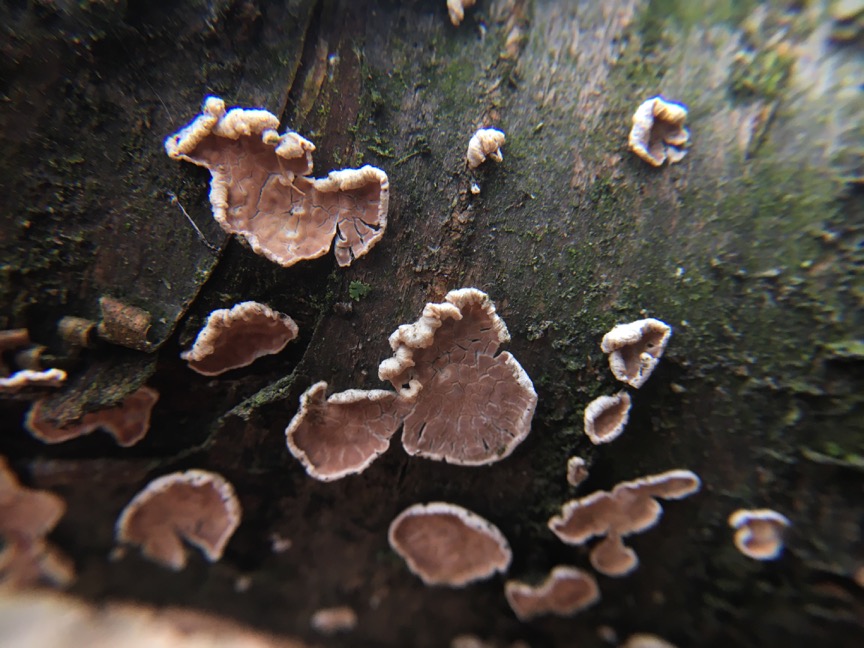

Lacrymoid spores.
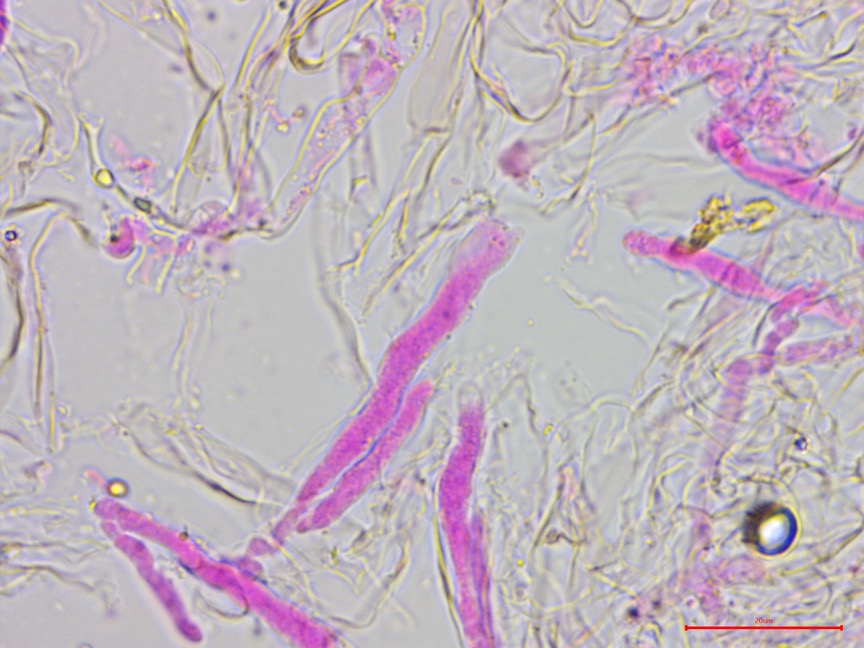
Cylindrical basidia.
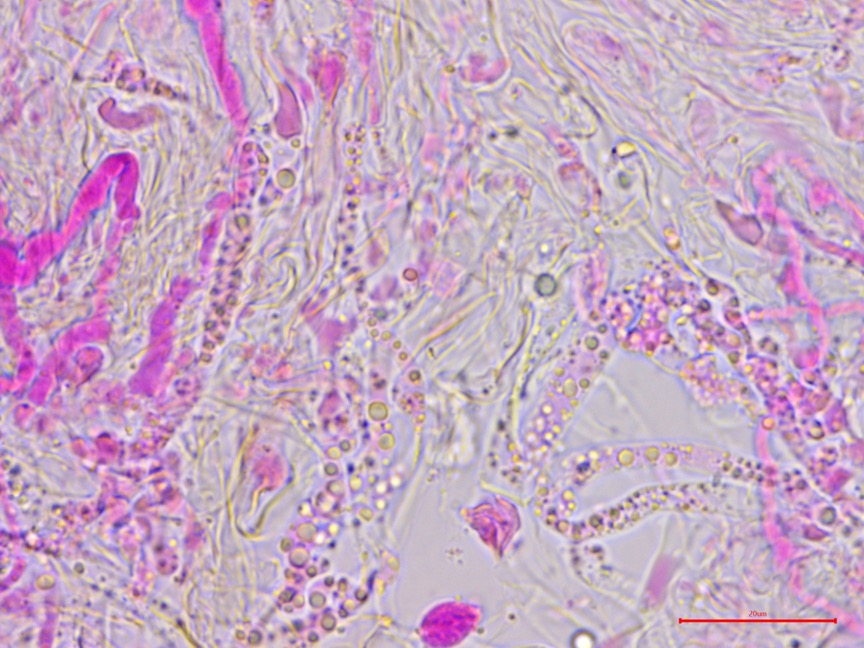
Abundant oil droplets in the cytoplasm of the hyphae.
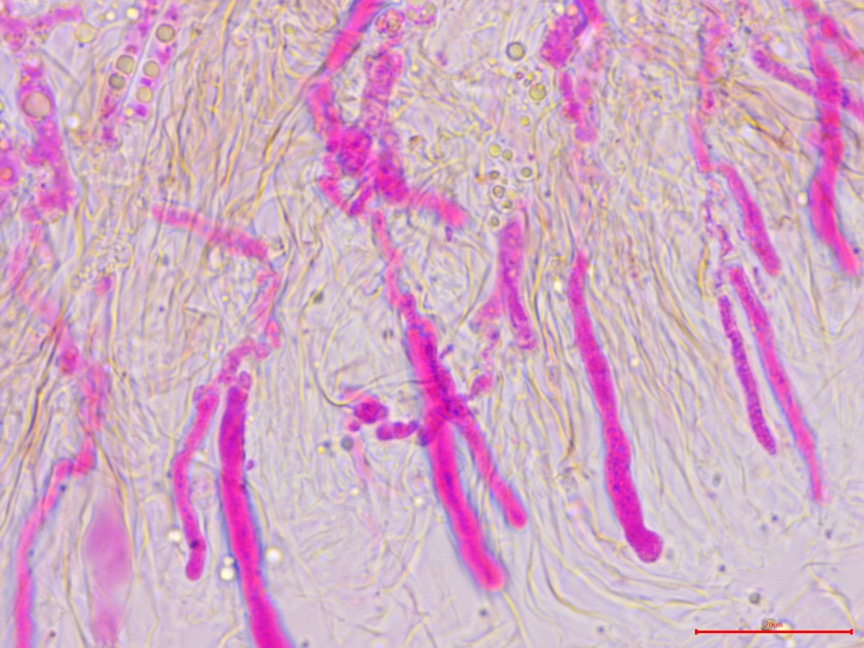
Densely packed hyaline tissue (perhaps spent basidia) crowded the hymenium.
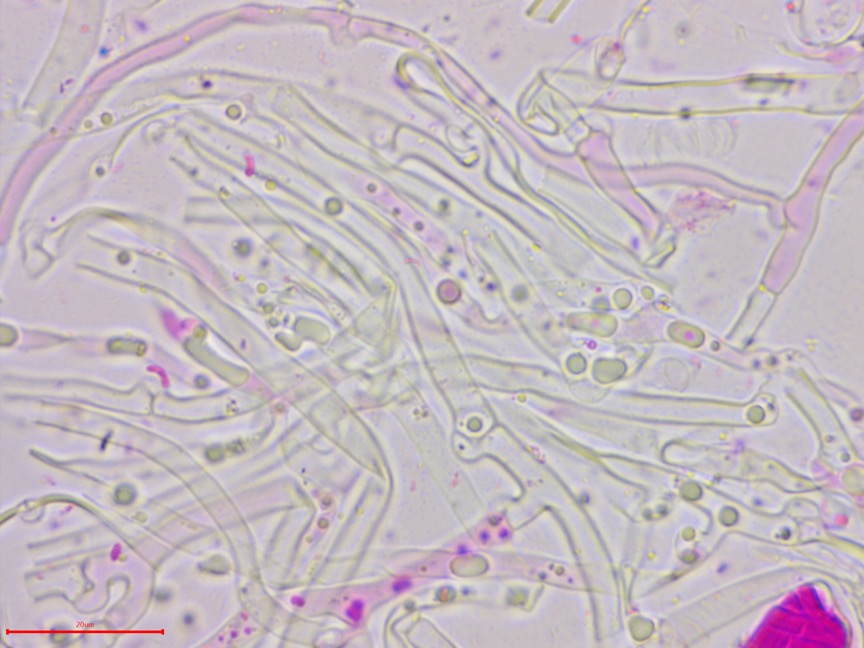
Clamp connections.
